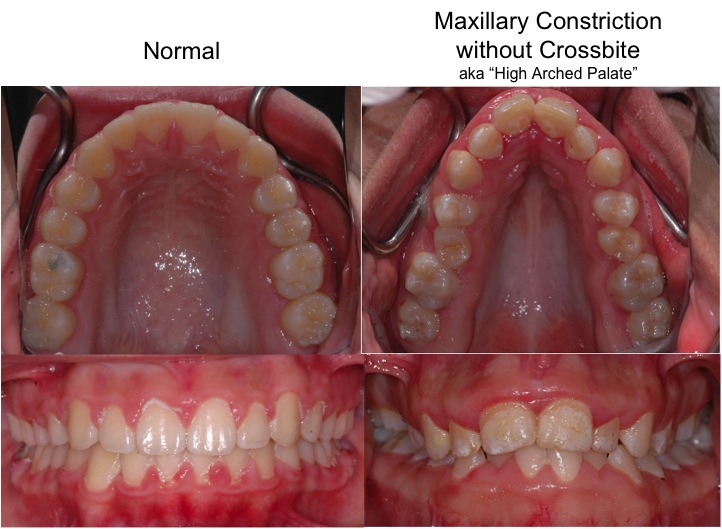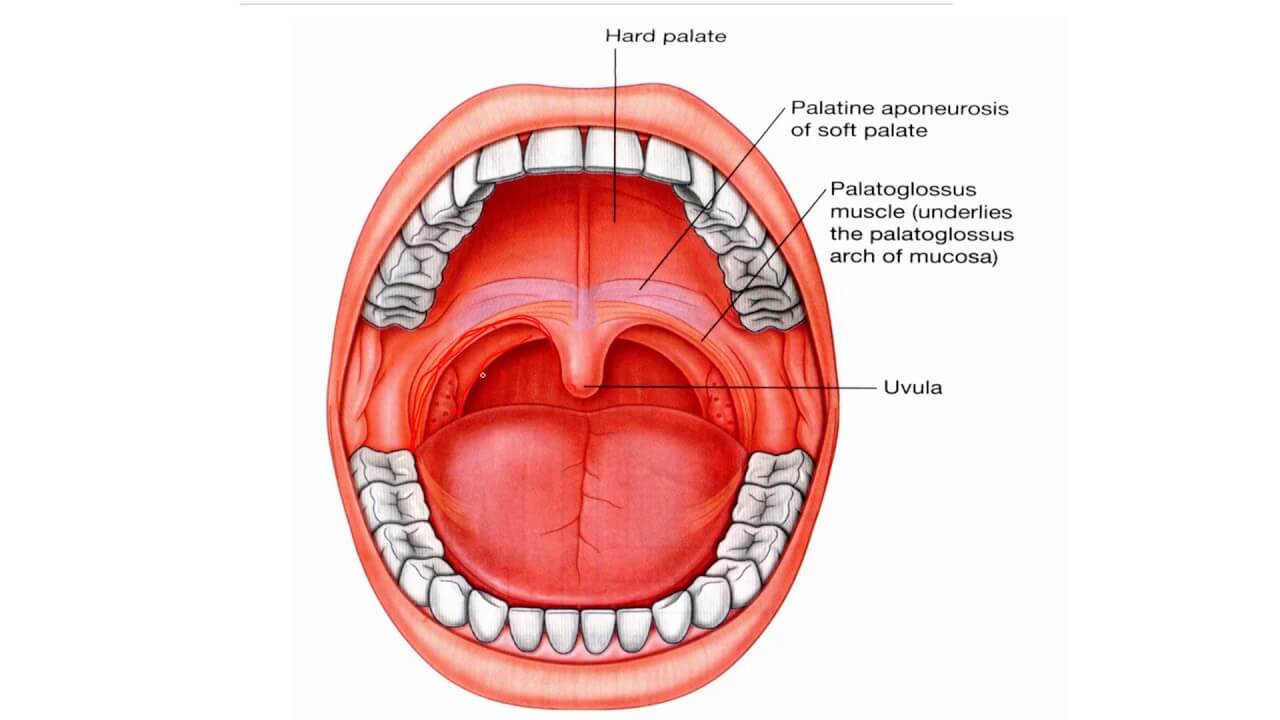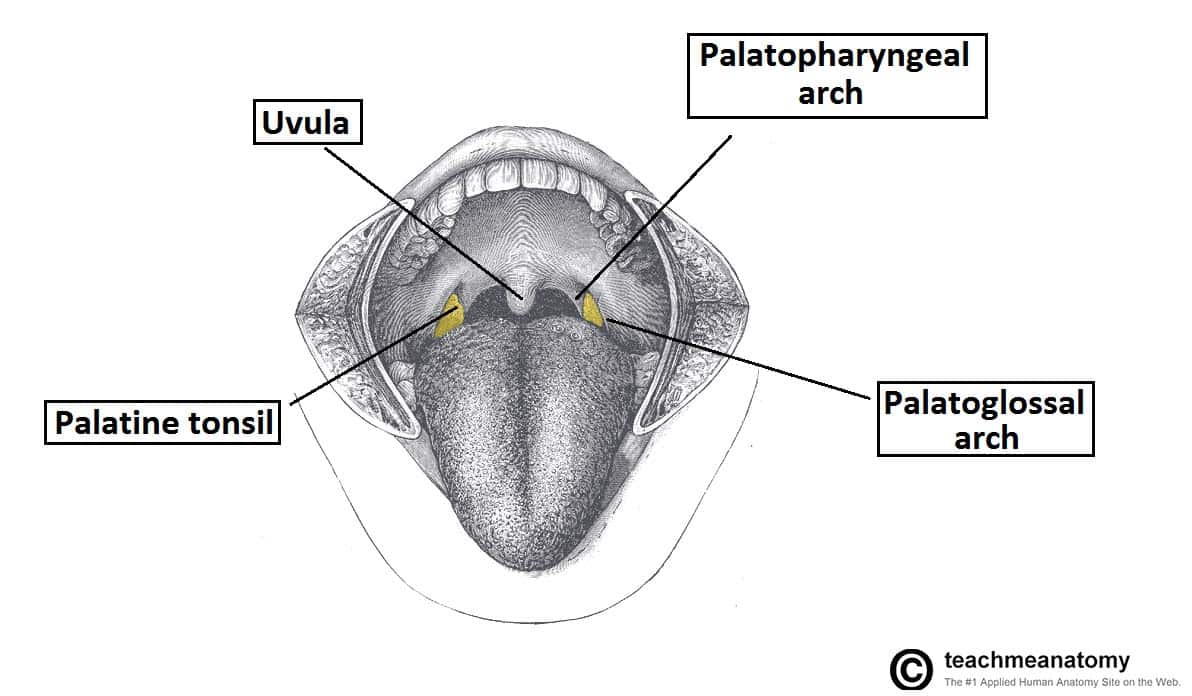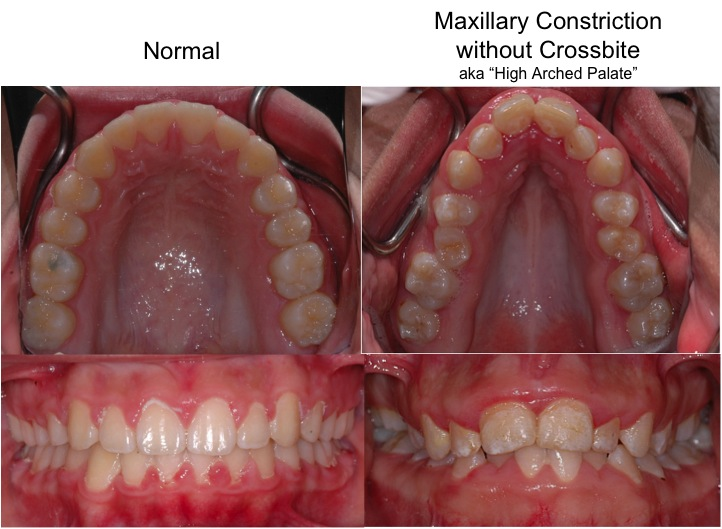
One of the main ways an arch palate can affect oral health is by causing speech difficulties. The high and narrow shape of the palate can interfere with the proper movement of the tongue and the production of certain sounds. This can lead to speech impediments such as a lisp or difficulty pronouncing certain words.
In addition to speech difficulties, an arch palate can also affect chewing and swallowing. The narrow space in the mouth can make it difficult to properly chew and swallow food, leading to problems with nutrition and digestion. This can result in weight loss, malnutrition, and other related health issues.
Furthermore, an arch palate can also contribute to dental problems. The narrow shape of the palate can cause crowding of the teeth, making it harder to clean them properly. This can increase the risk of tooth decay, gum disease, and other oral health issues. Additionally, the high palate can also cause problems with the alignment of the jaws, leading to bite problems and temporomandibular joint (TMJ) disorders.
What is an Arch Palate?
The arch palate is made up of two main parts: the hard palate and the soft palate. The hard palate is the front, bony part that forms the majority of the arch. It is made up of the palatine bones and connects to the maxilla, or upper jawbone. The soft palate, on the other hand, is the flexible, muscular part located at the back of the arch. It extends from the hard palate and hangs down into the throat.
The arch palate is essential for proper oral health and function. It helps to separate the oral and nasal cavities, allowing for efficient breathing, swallowing, and speech production. It also provides support for the teeth and helps to maintain their alignment. Any abnormalities or issues with the arch palate can have significant effects on oral health and overall well-being.
Definition and Structure
Structure of the Arch Palate
The arch palate is formed due to the abnormal development of the bones and tissues in the roof of the mouth. The elevation and arching of the hard palate result in a reduced space for the tongue and other oral structures. This can lead to various functional and aesthetic issues.
The arch palate can vary in severity, with some individuals having a mild arch and others having a more pronounced arch. The degree of arching can affect the overall shape and size of the oral cavity.
Causes of Arch Palate
The exact cause of arch palate is not fully understood, but it is believed to be a combination of genetic and environmental factors. Some potential causes include:
- Genetic predisposition: Certain genetic conditions, such as Down syndrome and Marfan syndrome, are associated with an increased risk of arch palate.
- Abnormal development: During fetal development, if the bones and tissues of the palate do not form properly, it can result in arch palate.
- Family history: There may be a familial tendency for arch palate, suggesting a genetic component.
- Environmental factors: Certain environmental factors, such as maternal smoking or alcohol consumption during pregnancy, may increase the risk of arch palate.
Types of Arch Palate
There are different types of arch palate, based on the severity and location of the arching. These include:
- High-arched palate: The most common type, characterized by a pronounced arch in the hard palate.
- Deep palate: A more severe form of arch palate, where the arching extends further back into the soft palate.
- Submucous cleft palate: A type of arch palate where there is a cleft or split in the muscles and tissues of the palate, but the surface lining remains intact.
The type of arch palate can influence the symptoms and treatment options available.
Causes of Arch Palate
1. Genetic Factors:
Arch palate can be inherited from parents. It may be a result of genetic mutations or abnormalities that affect the development of the palate during fetal development.
2. Syndromes and Medical Conditions:
Some syndromes and medical conditions can contribute to the development of arch palate. Examples include Down syndrome, Marfan syndrome, Ehlers-Danlos syndrome, and cleft lip and palate.
3. Environmental Factors:
Environmental factors, such as exposure to certain drugs, toxins, or infections during pregnancy, can also increase the risk of arch palate. Maternal smoking and alcohol consumption have been linked to the development of this condition.
4. Craniofacial Abnormalities:
Abnormalities in the structure and development of the craniofacial region can lead to arch palate. These abnormalities may affect the growth of the bones and tissues in the palate, resulting in a high-arched or narrow palate.
5. Mouth Breathing and Tongue Thrusting:
Habitual mouth breathing and tongue thrusting can put pressure on the palate, causing it to become arched or narrowed over time. These habits can be a result of nasal congestion, allergies, or improper tongue positioning.
Types of Arch Palate
1. Bony Arch Palate
Bony arch palate refers to a condition where the hard bony portion of the palate is abnormally high. This can result in a narrow arch and a deep roof of the mouth. It is usually present at birth and can affect the development of the teeth and jaw.
2. Soft Arch Palate
3. Mixed Arch Palate

Signs and Symptoms of Arch Palate
1. Speech difficulties: Individuals with an arch palate may have difficulty pronouncing certain sounds, such as “s,” “sh,” or “ch.” This can affect their ability to communicate clearly and may lead to speech delays or problems.
2. Chewing problems: The narrow shape of the arch palate can make it difficult for individuals to chew food properly. This can result in inefficient chewing, swallowing difficulties, and even choking on food.
3. Dental issues: Arch palate can lead to various dental problems, including crowded or misaligned teeth, a higher risk of tooth decay and gum disease, and an increased likelihood of developing temporomandibular joint (TMJ) disorders.
4. Breathing difficulties: In some cases, arch palate can affect the airway and make breathing more challenging. This can result in snoring, sleep apnea, and other respiratory issues.
5. Nasal congestion: The narrow palate can also contribute to nasal congestion and difficulty breathing through the nose. This can lead to chronic mouth breathing, which can further exacerbate dental and oral health problems.
6. Ear infections: The structure of the arch palate can affect the Eustachian tubes, which connect the middle ear to the back of the throat. A narrow palate can disrupt the proper functioning of these tubes, leading to a higher risk of ear infections.
Diagnosis of Arch Palate
Diagnosing arch palate involves a thorough examination of the oral cavity and may require the expertise of a dentist or orthodontist. The process typically includes the following steps:
- Medical history: The dentist will review the patient’s medical history to identify any underlying conditions or factors that may contribute to arch palate.
- Dental impressions: To get a more detailed view of the arch palate, the dentist may take dental impressions, which involve biting into a soft material that hardens into a mold of the teeth.
- X-rays: X-rays may be taken to assess the position and alignment of the teeth and jaws. This can help identify any underlying skeletal issues that may be contributing to arch palate.
- Orthodontic evaluation: If arch palate is suspected, the patient may be referred to an orthodontist for further evaluation. The orthodontist will assess the bite, jaw alignment, and overall oral health to determine the most appropriate treatment plan.
Overall, a comprehensive evaluation is essential for accurately diagnosing arch palate and developing an effective treatment plan. Early detection and intervention can help prevent further complications and improve oral health outcomes.
Treatment for Arch Palate
In mild cases of arch palate, conservative treatment options may be recommended. This can include exercises and therapies aimed at strengthening the muscles of the palate and promoting proper alignment. These exercises may be done under the guidance of a speech therapist or a dentist specializing in oral rehabilitation.
In more severe cases, surgical intervention may be necessary. This can involve procedures such as palatoplasty, which is the surgical repair of the arch palate. During this procedure, the surgeon will reshape and reconstruct the palate to improve its function and appearance.
In addition to surgical intervention, orthodontic treatment may also be necessary to correct any misalignment of the teeth caused by the arch palate. This can involve the use of braces or other orthodontic appliances to gradually move the teeth into their proper positions.
Regular follow-up appointments and monitoring will also be necessary to track the progress of the treatment and make any necessary adjustments. This will help to ensure that the arch palate is effectively managed and any potential complications are addressed in a timely manner.
Overall, the treatment for arch palate is aimed at improving the function and appearance of the palate, as well as addressing any associated issues such as speech difficulties or chewing problems. With proper treatment and management, individuals with arch palate can achieve optimal oral health and quality of life.
Complications of Arch Palate
One of the main complications of arch palate is difficulty in breathing. The high arch in the palate can cause a narrow airway, making it difficult for air to pass through. This can lead to snoring, sleep apnea, and other breathing problems during sleep. In severe cases, it can even affect a person’s ability to breathe properly during the day.
Another complication is speech difficulties. The high arch in the palate can interfere with the movement of the tongue and affect speech production. It can cause speech sounds to be distorted or unclear, making it difficult for others to understand what the person is saying. This can have a significant impact on communication and social interactions.
Chewing problems can also arise due to arch palate. The high arch can affect the alignment of the teeth and the position of the jaws. This can result in an improper bite and difficulty in chewing food properly. It can lead to digestive issues and malnutrition if the person is unable to effectively break down and digest their food.
Additionally, arch palate can impact dental care. The high arch can make it challenging to clean the teeth and gums properly. It can create tight spaces where food particles and plaque can accumulate, increasing the risk of tooth decay, gum disease, and other oral health problems. Regular dental visits and proper oral hygiene practices are crucial for maintaining good oral health in individuals with arch palate.
Prevention of Arch Palate
Preventing arch palate is crucial for maintaining good oral health. While some factors that contribute to arch palate, such as genetics, cannot be controlled, there are several preventive measures that can be taken to minimize the risk of developing this condition.
1. Proper Nutrition: Consuming a balanced diet that is rich in essential nutrients, especially during pregnancy, can help promote healthy development of the palate and prevent arch palate.
3. Prenatal Care: Regular prenatal check-ups and consultations with healthcare professionals are essential for monitoring the development of the baby’s palate. Any abnormalities or potential issues can be identified and addressed early on.
4. Avoiding Certain Medications: Some medications, such as certain anti-seizure medications, have been associated with an increased risk of arch palate. Pregnant women should consult with their healthcare providers to ensure that any medications they are taking are safe for the developing baby.
5. Genetic Counseling: If there is a family history of arch palate or other craniofacial abnormalities, seeking genetic counseling can provide valuable information and guidance for couples planning to have children.
6. Oral Hygiene: Maintaining good oral hygiene practices, such as regular brushing and flossing, can help prevent oral infections and conditions that can contribute to arch palate.
7. Timely Dental Care: Regular dental check-ups and early intervention for any dental issues can help prevent complications that may lead to arch palate.
How Does Arch Palate Affect Oral Health?
Speech Difficulties:
One of the most noticeable effects of arch palate is speech difficulties. The high and narrow palate can interfere with the proper movement of the tongue and the ability to produce certain sounds. This can lead to speech impediments such as lisping, difficulty pronouncing certain sounds, or a nasal-sounding voice. Speech therapy may be necessary to help individuals with arch palate improve their speech and communication skills.
Chewing Problems:
The arch palate can also affect chewing and swallowing. The narrowness of the palate can make it difficult for food to be properly chewed and mixed with saliva, which can lead to swallowing difficulties and choking hazards. Additionally, the improper alignment of the teeth due to arch palate can cause issues with biting and chewing food effectively. This can result in digestive problems and malnutrition if not addressed.
Dental Care:
Arch palate can also impact dental care. The narrowness of the palate can cause crowding and misalignment of the teeth, making it difficult to properly clean the teeth and gums. This can increase the risk of tooth decay, gum disease, and other oral health issues. Individuals with arch palate may require additional dental treatments, such as orthodontic braces or dental appliances, to correct the alignment of their teeth and improve oral hygiene.
Arch Palate and Speech Difficulties

When the arch palate is present, it can interfere with the proper movement of the tongue and other oral structures involved in speech production. This can result in speech difficulties such as unclear or slurred speech, difficulty pronouncing certain sounds, and a nasal or muffled quality to the voice.
The high and narrow arch of the palate can create a smaller space in the oral cavity, making it more difficult for the tongue to move freely and make the necessary contact with the roof of the mouth for proper speech production. The tongue may have to work harder to compensate for the restricted space, leading to fatigue and strain during speaking.
In addition to the physical limitations caused by the arch palate, individuals with this condition may also experience psychological and social challenges related to speech difficulties. Communication is a fundamental aspect of human interaction, and difficulties in speech can impact a person’s ability to express themselves clearly and be understood by others.
Treatment for arch palate and associated speech difficulties may involve a multidisciplinary approach, including the involvement of speech therapists, orthodontists, and oral surgeons. Speech therapy can help individuals learn techniques to improve their speech clarity and develop compensatory strategies to overcome the limitations caused by the arch palate.
Arch Palate and Chewing Problems
Causes of Arch Palate
There are several factors that can contribute to the development of arch palate. Some of the common causes include:
- Genetic factors
- Abnormal growth of the bones in the skull
- Chronic nasal congestion or allergies
- Prolonged use of pacifiers or thumb sucking during childhood
Effects on Chewing
Arch palate can affect the way a person chews their food. The narrower and higher roof of the mouth can make it difficult for the tongue to properly move the food around during chewing. This can result in inefficient chewing and a reduced ability to break down food into smaller, more manageable pieces.
Treatment Options
The treatment for arch palate and its associated chewing problems can vary depending on the severity of the condition. Some common treatment options include:
- Orthodontic treatment: This may involve the use of braces or other dental appliances to correct the alignment of the teeth and improve chewing function.
- Speech therapy: In some cases, speech therapy may be recommended to help individuals with arch palate improve their chewing and swallowing abilities.
- Surgical intervention: In severe cases, surgical intervention may be necessary to correct the arch palate and improve chewing function.
Importance of Dental Care
Individuals with arch palate and chewing problems should pay extra attention to their dental care. The narrow and high palate can make it more difficult to clean the teeth and gums properly, increasing the risk of oral health issues such as tooth decay and gum disease.
Regular brushing and flossing, along with routine dental check-ups, are essential for maintaining good oral health. Dentists may also recommend the use of specialized dental tools or techniques to ensure thorough cleaning of the teeth and gums.
Arch Palate and Dental Care
In addition to malocclusion, arch palate can also contribute to speech difficulties. The altered shape of the roof of the mouth can affect the movement of the tongue and interfere with proper articulation of sounds. This can lead to speech impediments and difficulties in communication.
Chewing problems may also arise due to arch palate. The narrow shape of the palate can affect the positioning and alignment of the jaws, making it challenging to chew food properly. This can result in difficulties in breaking down food into smaller pieces, leading to digestive issues and inadequate nutrition.
Proper dental care is essential for individuals with arch palate. Regular dental check-ups and cleanings are crucial to monitor and address any oral health concerns. Dentists may recommend specific oral hygiene techniques and tools to ensure effective cleaning between the teeth and along the gum line.
Orthodontic treatment may be necessary to correct malocclusion caused by arch palate. Braces or other orthodontic appliances can help align the teeth properly and improve oral hygiene. In some cases, oral surgery may be required to reshape the arch palate and create a more favorable oral environment.
It is also important for individuals with arch palate to be aware of the potential complications associated with this condition. These may include difficulties in breathing, swallowing, and even sleeping. Seeking prompt medical attention and following recommended treatment plans can help minimize these complications.

Dr. Fidel Cann: Esteemed orthodontist with a lifelong dedication to enhancing smiles and oral health. Pioneering expertise, compassionate care.





